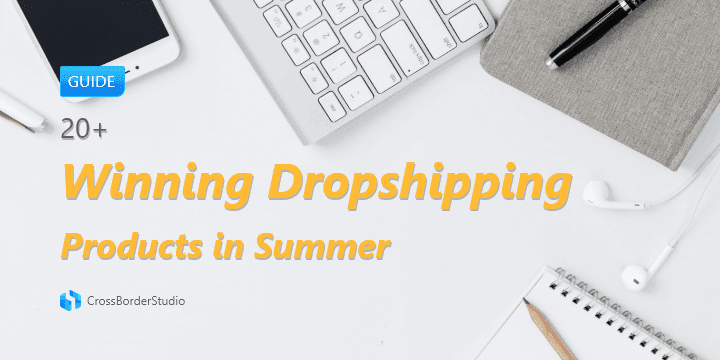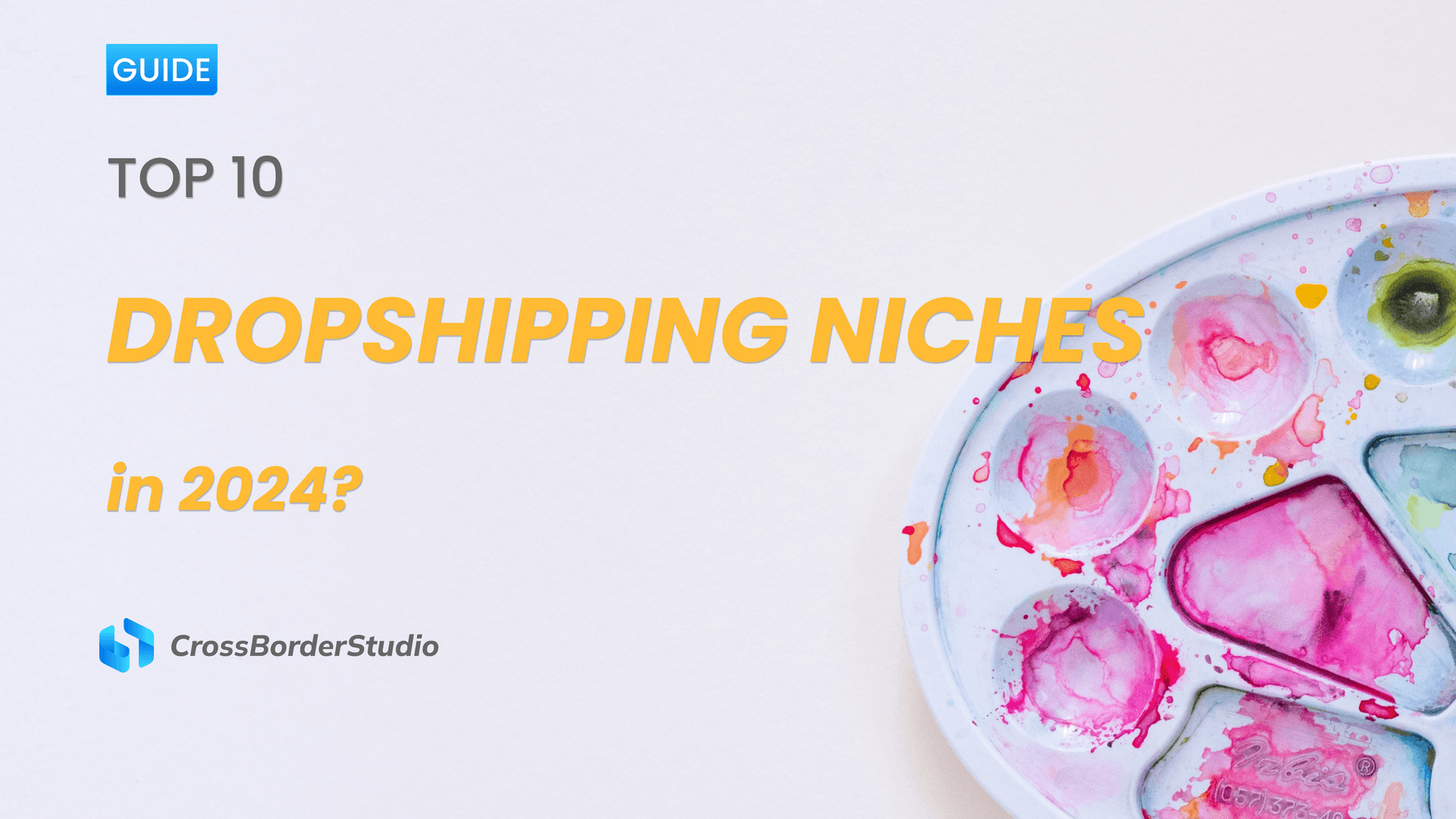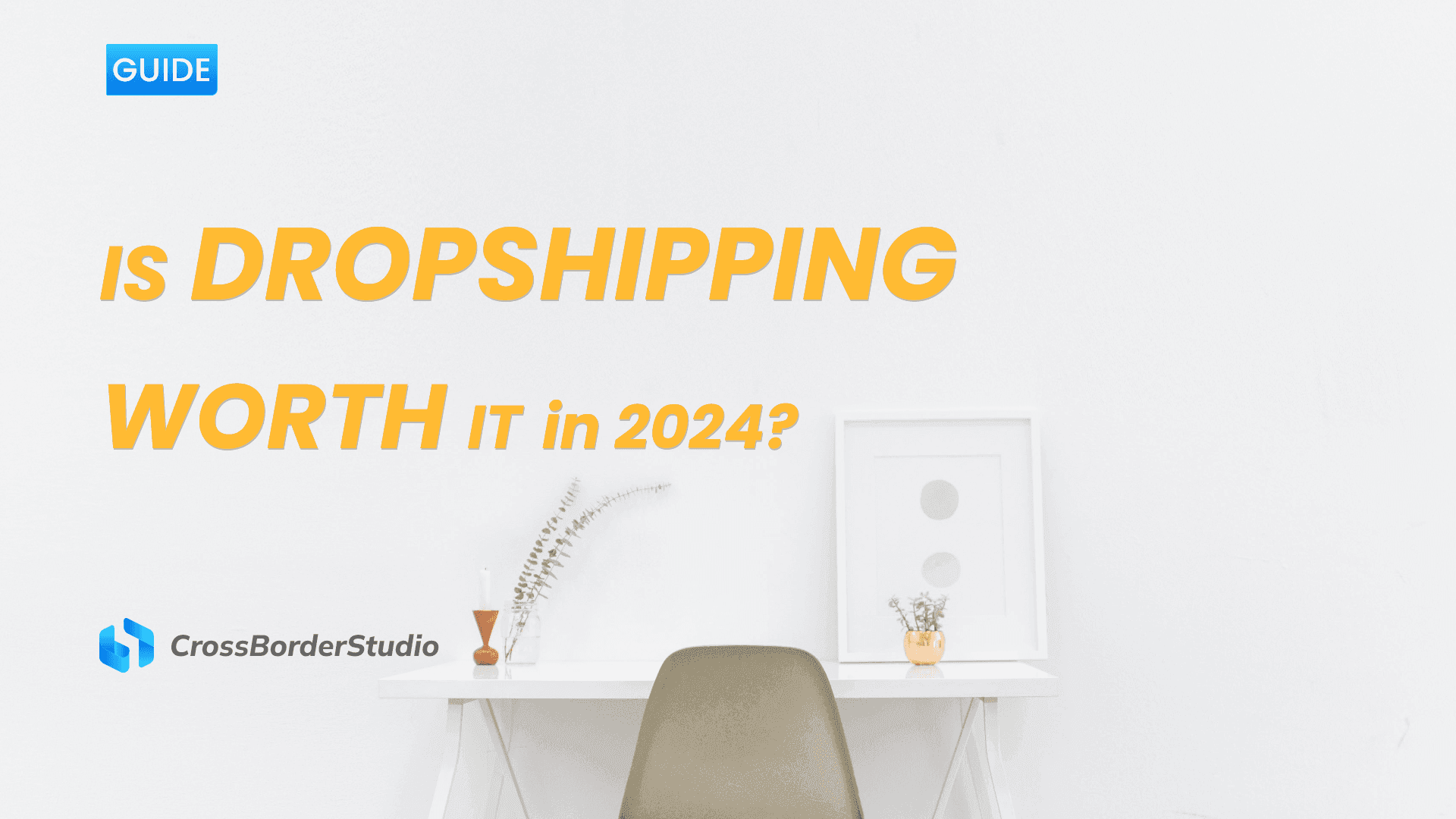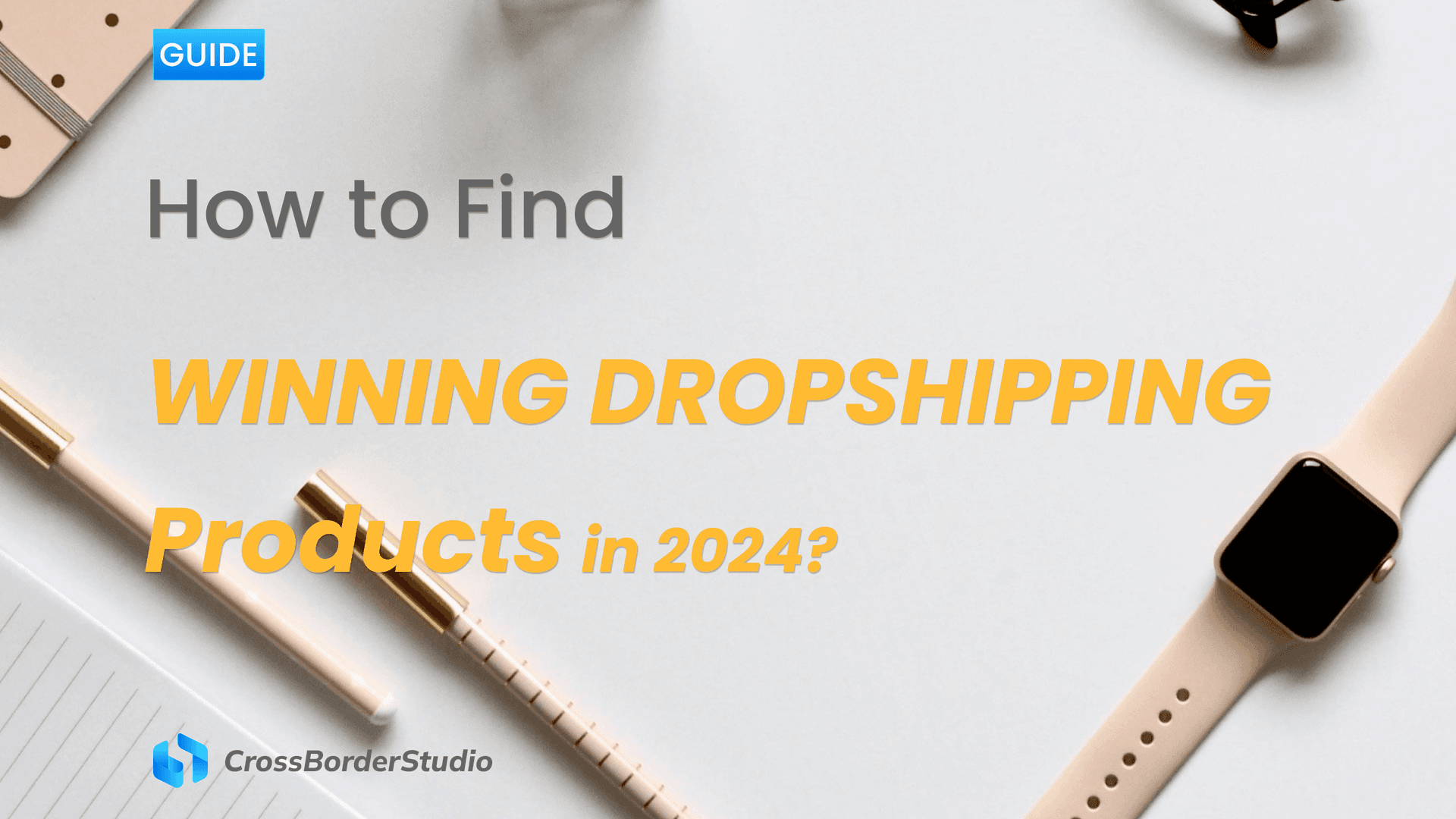
Let's be honest: starting a business for free is a myth. Even if you don't spend any cash upfront, you're still investing your valuable time and energy. This "free" effort has an opportunity cost – the potential income you could have earned elsewhere.
Because of this, you'll find many articles promising a "free" dropshipping business, but all of these only focus on minimizing the financial cost. That is also what we will do in this article.
In this guide, we’ll walk you through the 8 essential steps and strategies to launch your dropshipping venture with minimum cost. So, if you’re ready to turn your business dreams into reality without a big initial investment, keep reading.
Table of contents
1. Lay the Groundwork
1.1 Be prepared for time commitment
Dropshipping demands dedication, just like any entrepreneurial venture. You should be prepared to put in the hours to see results. Studies by Oberlo indicate the average dropshipper invests around 30 hours weekly. Shopify's survey further emphasizes this, with 44% of dropshippers dedicating full-time hours. Building a successful dropshipping business takes time and consistent effort – there's no shortcut to a thriving online store.
1.2 Register your company if neccesary
You may wonder if dropshippers need a business license or not. Check your local regulations to see if a business license is required for dropshipping in your area. This can vary by location. The advantage of setting up an LLC is that it separates your personal assets from your business assets. If something goes wrong and someone decides to sue your business, you can’t be held personally liable. Moreover, your personal assets can't be seized either. Consulting with a legal or tax advisor can help you determine the best structure for your situation.
Here are the basic steps to getting an LLC.
- Choose a name for your LLC.
- Choose a registration agent.
- Obtain your EIN and check tax requirements.
- Prepare an LLC operating agreement.
- Open a bank account for your LLC.
- File the articles of organization.
- Create and launch a website for your LLC.
1.3 Utilize Free Courses
Many people believe that they need a paid dropshipping course in order to succeed with dropshipping. But here we want to provide you with options for free courses:
- Shopify Academy: Shopify offers a free course titled "Dropshipping 101: Build your first online store". This course walks you through the process of setting up a Shopify store, finding winning dropshipping products, and marketing your business.
- AutoDS Free Course: AutoDS, a dropshipping automation tool, offers a free course that guides you through navigating dropshipping with various platforms.
- Youtube: You'll find a wide range of dropshipping content on YouTube, catering to different experience levels and covering various aspects of the business. Such as The Ecom King, Learn With Shopify, Ac Hampton,Arie Scherson etc.. Some creators may use free content to promote their paid courses or affiliate products. Be mindful of this and do your own research before investing.
- Class Central: This website aggregates online courses from various platforms. You can search for free dropshipping courses by using keywords like "dropshipping" or "e-commerce".
- Udemy Free Dropshipping Courses: Udemy occasionally offers free dropshipping courses. You can search for free courses using the "Free" filter (be aware that some free courses may become paid later).
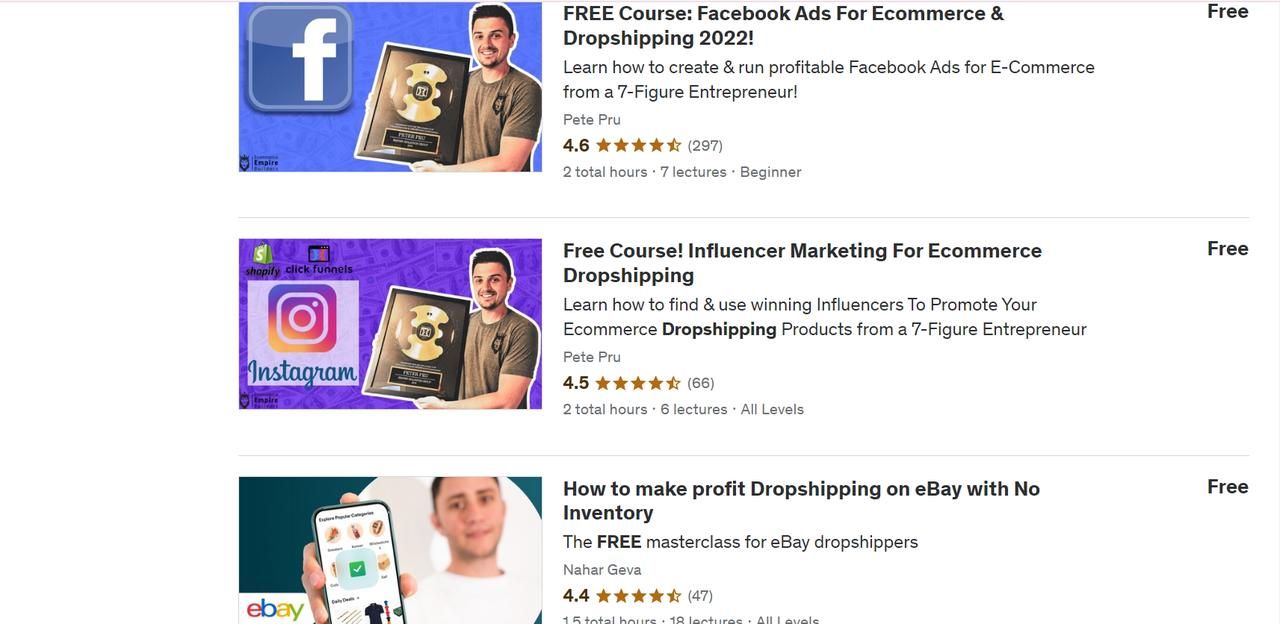
- Blogs and Articles: Many websites offer free blog posts and articles on dropshipping. Search for topics like "how to start a dropshipping business" or "dropshipping tips for beginners." Be sure the information is current, as the dropshipping landscape can change quickly. You can also follow our blogs to get the latest information about dropshipping.
Free resources can provide a solid foundation for understanding dropshipping and getting started. By leveraging these free resources and your own research, you can start your dropshipping business without a significant upfront investment.
Of course, there are more free courses channels. To learn more, you can read below:
Top 7 Free Dropshipping Courses in 2024
2. Choose a profitable dropshipping business idea
In dropshipping, your business idea revolves around identifying a specific target audience and the products they are crazy about. Without large inventory commitment, dropshipping is more flexible than traditional businesses. You can start with a limited product range tailored to a particular demographic.
For example, you create a concept to sell graphic tees specifically designed for badminton lovers. The designs resonate with their interests, and the quality and style align with what they wear. This well-defined niche becomes the foundation for everything – from the products you choose to your website's design and marketing strategy.
Before starting, better perform some market research to see who fits into your intended demographic and how you’ll need to reach them. Research online trends, consumer buying habits, and competitor analysis in potential niches. Tools like Google Trends and social media listening can be helpful.
Dropshipping's low upfront costs allow you to adapt and change if you discover a better niche or your interests evolve. If your initial product line isn't performing as expected, you can explore new options without significant financial burden.
3. Free Product Sourcing
Choosing the right product is like finding the golden ticket for dropshipping success. Generally there are four channels to discover winning products: social media, e-commerce marketplaces, search engines, and product research tools. Each offers unique advantages to fit your specific needs.
Social media's massive user base and targeted advertising make it a goldmine for dropshippers. The best part is that** utilizing social media for product research** is generally free. Platforms like Facebook, Instagram and TikTok can showcase products visually, helping you gauge potential customer interest. You can discover hot products, see what competitors are selling and how they advertise, and learn from their best practices. Social media communities dedicated to dropshipping or specific niches often share winning product ideas and reviews. This can be a valuable source of real-world data.
But please remember, not everything trending on social media translates to long-term sales success. Be cautious of fads and focus on products with consistent demand. If you find a winning product through social media, chances are others have too. The market might become saturated quickly. Also sourcing through social media is a time consuming process.
By effectively using Ecom marketplaces like Amazon, Aliexpress, Temu etc., you can gain valuable insights into market demand, identify profitable niches, and make informed decisions about the products you choose to sell.
Google trends is a research tool offered by Google, which allows users to see the search volume of any topic or keyword in different regions across the world. Real data stated helps you make business decisions and take your dropshipping store to great heights. There are various product research tools available, each with unique strengths and weaknesses. Some offer free plans, such as Shine, My Ad Finder, Niche Scraper etc..
We have stated step by step how to use these tools in below articles, please read and get more details:
How To Find Winning Dropshipping Products in 2024 part 1
How To Find Winning Dropshipping Products in 2024 part 2
4. Find a Reliable Supplier
Finding a reliable dropshipping supplier is important for the success of your business. They're the ones who package, quality-check, and ship your products directly to customers. Since you don't physically handle the items, any mistakes on their end become your responsibility to fix. Choosing a supplier who prioritizes your needs and goes the extra mile for customer satisfaction is crucial. Remember, you want a partner, not just a provider.
Here are some factors to consider when choosing a dropshipping supplier:
- Product selection: The supplier should offer a wide range of products that are relevant to your target audience.
- Pricing: The supplier should offer competitive prices so that you can make a profit on your sales.
- Shipping: The supplier should offer reliable shipping options that meet your customers' needs.
- Customer service: The supplier should have good customer service in case you have any problems.
Let's explore the question of how to find dropshipping suppliers.
- Google Search: Use specific keywords like “wholesale distributors” or “dropship suppliers for [product/niche]” to find suppliers in your niche.
- Free Supplier Directories: Utilize directories like Worldwide Brands or SaleHoo. Filter by your industry, location, or product to find a targeted list. Just remember to double-check the info and make sure the suppliers have a good reputation.
- Trade shows: It's a fantastic way to meet suppliers face-to-face. You can see their products firsthand, ask them all your burning questions, and start building a relationship. Remember to prepare some questions about minimum order quantities and shipping times beforehand.
- Alibaba & AliExpress: These platforms offer a entry point to dropshipping with potentially lower product costs. Just be sure to communicate clearly, negotiate terms before you order, and check supplier ratings to avoid any surprises. However, slower shipping times and inconsistent product quality are common downsides.
Professional dropshipping supplier, can provide a more reliable experience. They often have established relationships with manufacturers, leading to faster shipping and better quality control. While the initial product cost might be slightly higher, the benefits in customer satisfaction and brand loyalty can outweigh the difference.
Once you have chosen a dropshipping supplier, you will need to create an account and build your online store as the next step.
5. Build Your E-commerce Store
Selecting an appropriate e-commerce platform to build your store on is a critical decision when starting your dropshipping business. The right platform can help keep your initial costs low and help you manage your online store easily. We have listed the popular options for you together with the pros and cons of each plafform:

Shopify is the most popular option now. If you're willing to dedicate a small budget, it is a great choice. Here's a simplified breakdown of the process:
Step 1 Sign Up and Explore:
- Head to https://www.shopify.com/ and start your free 14-day trial.
- Explore the platform, get familiar with the interface, and browse themes (store designs).
Step 2 Pick a Theme:
- Shopify offers free and paid themes. Choose one that suits your brand and products.
- Consider ease of use and customization options when selecting a theme.
Step 3 Add Products:
- Find dropshipping suppliers (remember the tips from our previous conversation!).
- Use Shopify's product creation tools to add product descriptions, pricing, and high-quality photos.
Step 4 Set Up Payments:
- Integrate a payment gateway like Stripe or PayPal to allow customers to pay securely.
Step 5 Configure Shipping:
- Decide on your shipping rates and regions you'll deliver to.
- Choose reliable shipping carriers and set up shipping profiles.
Step 6 Customize Your Store (Optional):
- Edit your theme's colors, fonts, and layout to create a unique brand experience.
- Add custom pages like "About Us" or "Contact Us" to build trust with customers.
Step 7 Launch and Promote:
- Once you're happy with your store, remove the password protection and officially launch!
- Promote your store on social media, run ads, or collaborate with influencers to reach your target audience.
But if you’re here to learn how to start a dropshipping business for free, still there are a lot of options. You can consider ecommerce and social media platforms though they have some limitations.
If the right steps are taken, you can set up your Amazon or eBay store without additional expenses.
eBay, for example, allows businesses up to 250 free product listings per month before charging listing fees.
Amazon, meanwhile, has multiple selling plans available. The basic plan charges $0.99 per item sold. This means, as long as you are making a profit of at least $1 on each item sold, you can make a profit. However, if you’re just starting out or unsure about sales, the individual payment plan may be safer at first.
Another way is to set up your online store on social media platforms for free, such as Facebook, Instagram, Tiktok and Youtube.
Potential limitations are that generating enough sales requires a strong following on Instagram or Facebook. And when you're new on these platforms, it can be difficult to gain traction. With persistence and hard work, you can find success on these platforms.
6. Market Your Dropshipping Store
Once store is ready, it’s time to market your new store.
Products don’t sell themselves. While physical stores have windows and banners, online dropshipper stores require a completely different approach for a different market.
Generally there are the following ways:
- Content marketing
If you want to build a long-term stream of traffic for your store, start a blog around your dropshipping niche and create high-quality content that entertains your target audience.
Craft informative blog posts that act as guides, tutorials, or even listicles related to the products you sell. This strategy expands your website's reach and drives more visitors to your online store.
- SEO (Search Engine Optimization)
By strategically using keywords and metadata, your articles become more discoverable. When users search for related products, your SEO-optimized content ranks higher, pushing it to the top of the search results. It's like a domino effect - SEO positions your content for success, ultimately leading more visitors to explore your dropshipping store, not just your blog. SEO (Search Engine Optimization) marketing will eventually bring more traffic to your website.
- Email Marketing
Emails is still a powerful tool for dropshipping businesses, as it helps build long-lasting relationships with customers and drives repeat purchases. By sending targeted, personalized content such as promotional offers, product recommendations, and informative newsletters, you can increase customer engagement and boost sales.
- Social Media & Community Engagement
A creative social media strategy can put you ahead of the competition and more easily capture people’s attention.
Research which platforms your ideal customer frequents most (Facebook, Instagram, TikTok etc.). Understanding their demographics and interests is crucial for tailoring your content.
Develop a regular posting schedule to stay top-of-mind with your audience and Post Consistently. Mix promotional content with engaging posts. Share blog posts, industry news, or helpful tips related to your niche. Actively engage with your audience by responding to comments and messages promptly.
Seek out online communities (Facebook groups, Reddit forums, Discord servers) that cater to your dropshipping niche. These groups are filled with potential customers who share similar interests in the products you sell. By becoming a valuable asset to online communities in your niche, you can leverage their power to organically market your dropshipping store, build brand awareness, and ultimately attract loyal customers.
- Mobile marketing
Mobile marketing allows you to personalize the shopping experience for your customers, directly on their phones. This translates to real opportunities for your dropshipping business.
For example, you can start a VIP text club and encourage website visitors to sign up for exclusive deals and promotions. Consider using SMS marketing to send targeted text messages with special offers, flash sales, or abandoned cart reminders. This can be a permission-based way to reach customers directly on their phones.
You can also provide instant customer support via a live chat on Messenger.
Or if you have a mobile app for your dropshipping store, leverage push notifications to send timely alerts about promotions, new product arrivals, or exclusive mobile app deals.
- Retarget Your Customers
In fact, the average conversion rate of an ecommerce store is less than 2%. This means that 98 out of every 100 visitors will leave your site without making a purchase.
This is where retargeting campaigns come in. By setting up a retargeting campaign, you could target ads specifically at customers who added a product to their carts but didn't initiate a checkout. Research shows retargeting can boost conversion rates by up to 70%!
- Promotions & Discounts
Discounts and special offers are powerful tools to generate customer interest and drive sales for your dropshipping business.
Here are some suggestions:
-Time-Limited Deals
-Reward Loyal Subscribers
-Offer Bundle Savings
-Spread the Word with Discount Vouchers
-Flash Sales
-Run Giveaways to Amplify Reach
- Differentiate Your Dropshipping Business
Explore unique strategies to differentiate your dropshipping store from the competition. Implementing these tips will significantly boost your chances of standing out.
- Create a strong brand identity
- Customize your product descriptions
- Add value to your products
Overall, these free marketing ideas which have been proven successful for countless online businesses, can jumpstart your dropshipping journey. Focus on organic tactics and track their effectiveness. As you grow, refine your strategy for maximum impact!
Of course, there are still paid marketing methods such as influencer marketing and paid ads. You can read the article below to learn more:
Top 10 Dropshipping Marketing strategies for 2024
7. Develop Customer Relation
In today's market, high-quality products and a strong brand aren't enough. Customers care more about customer service. A positive experience keeps them coming back for more. Excellent customer service encompasses everything from your marketing approach to how you handle inquiries and resolve issues. Commitment to great customer service sets you standing out from the crowd.
Here are a few ways:
- Be a Helpful Guide: Craft clear and informative product descriptions, FAQs, and return policies. This empowers customers to make informed decisions.
- Express Gratitude: A simple thank-you note in the package shows you appreciate their business.
- Foster a Supportive Community: Create a space for customers to connect, ask questions, and share experiences. This builds loyalty and trust.
Remember, happy customers are your best brand promoters!
8. Analyze and Improve Your Offering
After you’ve been marketing and managing your dropshipping business for some time, you can start looking at the results of your hard work. Monitor essential metrics like website traffic, conversion rates, average order value (AOV), customer acquisition cost (CAC), and customer lifetime value (CLTV). There are many analytics tools available, such as Google Analytics, to help you track this data. Actively seek customer feedback through surveys, reviews, and social media engagement. Analyze this feedback to identify areas where you can enhance the customer experience. Based on your data and customer feedback, you can see what's working well and where there's room for improvement. It is an ongoing process. Regularly analyze your performance, make adjustments, and experiment with new strategies to keep your business growing.
Final Words
Starting dropshipping is easy and simple, and also you are able to choose some tools to help your dropshipping business to make it much easier and simpler. After learning the 8 steps to start your dropshipping business, it's time to carry out your brilliant business idea.
Click here to start a dropshipping business now with CrossBorderStudio.





